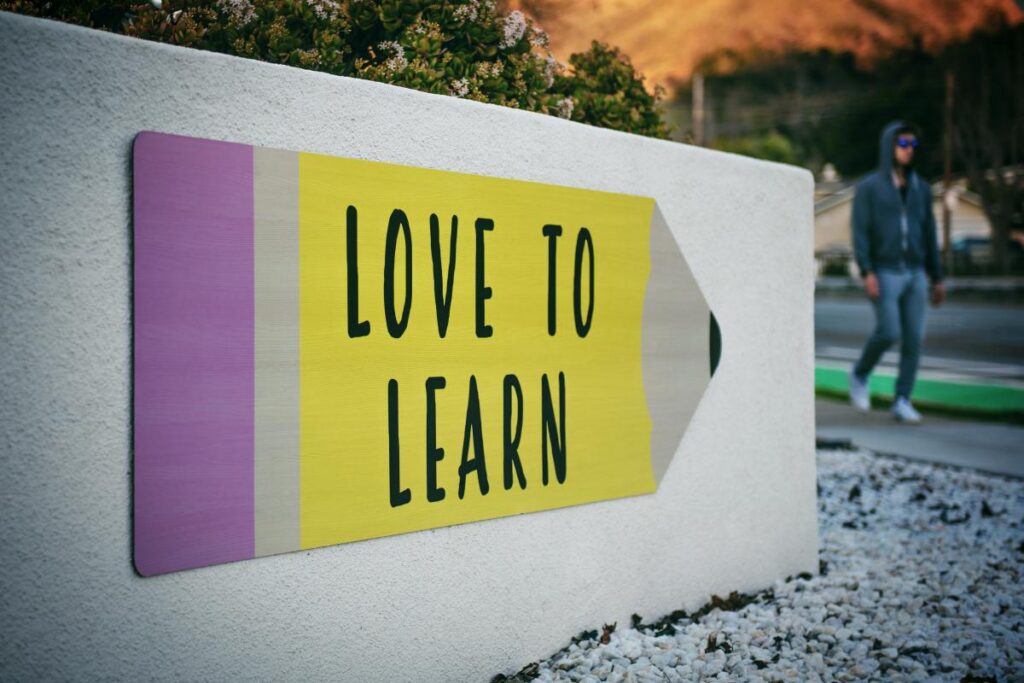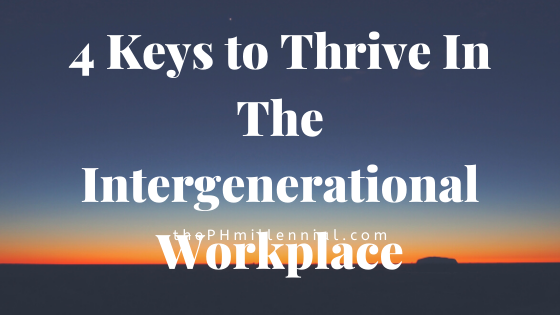Have you been thinking about how to thrive in the intergenerational workplace?
The workplace nowadays has expanded like never before seen. Nowadays it is not uncommon to have all 5 (more common is 4) generations in the same workplace. This is from the Traditionalist – born before 1945 – up to Generation Z – born around 1995.
Generational diversity is growing in all of today’s job markets.
This growing diversity has been seen by many companies as a way to leverage a competitive advantage in the growing intergenerational workforce.
The varying defining characteristics and lived experiences of each generation in the workforce allows for more diversity in ideas, knowledge and perspectives.
These are the 4 Keys to Thrive in your Intergenerational Workplace:
- Understanding Everyone’s Perspective
- Know When to Lead
- Learn & Listen to One Another
- Meet People Where They Are
It is important that you understand how to thrive going into the intergenerational workplace.
Support The Public Health Millennial on BuyMeACoffee
What is it – The Intergenerational Workplace
The Intergenerational Workplace is the place where people work where there are individuals from several generations.
Here is a diagram of the 5 generations in the workforce today. Remember that the dates prescribed for these generations are never static but are determined by shared lived experiences and innovations during the varying generation:

For example, an innovation that happened during each generation is:
- Traditionalist: Affected by World War 2. Didn’t grow up with high-technology.
- Baby Boomer: Capitalism main theme. Cultural identity became important.
- Generation X: Materialism defines their world. Consumerism everywhere.
- Millennial: Grew up during the emergence of the internet. Global focus.
- Generation Z: Have grown up closely with technology. Smart phone geniuses.
The workplace has become a diverse mixing pot of various generations. Though this presents important advantages for the company, knowing how each individual can put their best foot forward will allow you all to thrive.
Why is knowing about the Intergenerational Workplace Important?
Realizing the strengths and also the weaknesses that each person in your workplace inherently displays will allow you to better improve your work relationships. Thus your overall work performance.
What is someone’s preferred mode of contact? Do they communicate best in-person, or via email, text or phone? Maybe the office uses Slack, is this what everyone is comfortable using?
These are just a few of the questions you have to ask yourself and coworkers when communicating in an intergenerational workplace.
Communication is going to be one of these things that you have to figure out how to communicate with each individual person in your workplace. The earlier you learn what different people prefer, the better you will be at doing your job.
Additionally, in intergenerational workplaces different generational coworkers TEND to have generational behaviors.
Please don’t take this table of characteristics for each generation too strictly since obviously individual people are never all the same. There is wide variety among generations as well as between them.
The table below shows the common qualities and traits of the 5 different generations in the workplace:

By better understanding the holistic perspective that your coworkers use to approach certain task, it will teach you how to cater each of these specific interactions to be the most beneficial.
Learning how to work with people with different areas of knowledge and ideas as well as different generational perspectives can be the difference between you performing good and great on your evaluations.
(Related Article – Why You Need 3 Hobbies in Life)
4 Keys to Thrive in The Intergenerational Workplace
By understanding the differences and similarities that you have with others in your intergenerational workplace will allow you to better position yourself for success.
1. Understanding Everyone’s Perspective
The first step to mastering your workplace is to master the understanding of everyone’s perspective.
The sooner you open up to everyone and really talk to them, the better.
Make sure you are asking questions like:
- How do you best process information?
- What’s the best way to reach you? A under what circumstances?
- What are your communication pet peeves?
Beyond this, you should be asking how you can help or assist others. Or if you are a more senior member of the workforce, you should be aiming to teach and mentor the younger workers.
If someone has difficulty with texting for example, you should compromise so that you either do emails or phone-calls instead with this particular individual.
When you understand everyone’s perspective, make sure that you respect each individual’s perspective. You will learn who you can approach to talk about what sorts of things.
Remember that new perspectives can spark new ideas and change your workforces traditional way of working. You never know what new processes will boost your entire company’s workflow so make sure to keep exchanging ideas.
2. Know When to Lead
In an intergenerational workplace, at one point or another everyone is going to have to lead. This can be from as big as leading a project or just speaking up about this innovative model you learnt in graduate school.
Leadership also needs to be exemplified by every person in the office in their respective roles.
Showing leadership can come in three flavors:
- Leading the work you do in your position
- Leading others in their work
- Leading Upward – i.e. asking the bosses the right questions for your work to progress successfully
With many jobs pushing for employees with leadership talents, you should develop a leadership style that allows you to cater to the various coworkers around you.
It is also important to know when to lead and speak up. You do not want others to feel like you are stepping on their toes so ensure that you understand how to approach each individual in your workplace.
For example, it might be better to find out beforehand from the colleague leading the meeting if a suggestion you want to make will feel like you are imposing on someone else. This can help stop any unnecessary workplace drama.
As leadership becomes a more sought after trait by employees in all fields, it is important to always keep an open mind to the perspectives of others.

3. Learn & Listen to One Another
You will want to learn and listen to everyone in your workplace. This will be important for you especially as a Millennial or Gen Z.
Growing up in the Internet Age, Millennial’s love to learn. And we all have the technology to easily learn new information. This does not change in the intergenerational workplace, multiple generations in the workplace creates an environment where everyone is able to learn from one another.
Maybe you could introduce “reverse mentoring” into your workplace. This is a program where a younger employee and an older employee help each other learn new ideas.
Millennials as well as Gen Z have a lot to teach older employees as they have amassed a lot of knowledge on the internet as well as through education. While older employees also have a wealth of knowledge from lived experience and can teach younger employees about business knowledge and how to navigate the working world.
This learning can go beyond just work experience. You can learn about work-life balance and how to strategically position yourself for promotion or for a next job.
Learning is a process that requires you to genuinely listen to the others perspective. This will be an extremely important skill to have in your intergenerational workplace.
4. Meet People Where They Are
This is probably the most important tip from this list.
We are living in the ever changing Digital Age. Although technology has given us a plethora of communication options, it is important to remember that not everyone has the same skill level for every option.
While some people are going to be comfortable with strictly digital communication, others may genuinely prefer face-to-face interaction.
Communication in the workplace may be limited by the person’s aptitude for certain tools that they are familiar and comfortable with using.
Before you get frustrated with someone else because they can’t communicate how you want, think about how you can help serve them and see what can work best for both of you. Even if that means you have to have a phone-meeting every now and again.
Essentially, ensure that you are meeting people in the middle where it is most comfortable and thus beneficial for both of you.
If you can meet someone where they are, it will prove a lot more fruitful for both of you by making each others job a lot easier.
Also by doing this, coworkers are going to become more trusting of you and know they can have more open conversations with you in the future. And you also stand to learn a lot from one another from doing this.
So ensure you are giving thought to how can I better meet this person so we can both benefit from our work relationship the most.

Conclusion
Leveraging each generation’s strengths and creating a learning environment creates a deeply engaged and robust workplace.
Though understanding the general differences within generations can be important, learning the specific personalities and perspectives from your intergenerational workplace will be hugely beneficial.
These 4 keys to help you to thrive in your intergenerational workplace are:
- Understanding Everyone’s Perspective
- Know When to Lead
- Learn & Listen to One Another
- Meet People Where They Are
By embracing and celebrating the differences in all generations in the workplace, it will create an environment that will foster greater connection, understanding and cohesion.
Never overlook the differences in perspective, but always be prepared to learn from them.
What has been a struggle for you in your intergenerational workplace?



